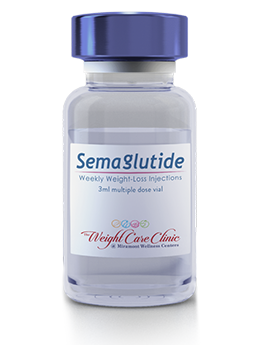Weight Loss Management
Weight loss management involves a balanced diet, regular exercise, and sustainable lifestyle changes for long-term health and well-being.
What is obesity and how we can help?
Weight management adheres to a multi-faceted lifestyle model that’s comprised of several interrelated decisions and activities such as: eating healthy foods; understanding portion sizes, nutritional values, and macronutrient ratios; creating a holistic exercise regimen that works with your schedule, incorporates your interests, is dynamic enough to prevent burnout, and sets reasonable goals; and accessing the wealth of safe, clinically proven, prescription weight management medications that are currently available.
Formulation Compounding Center is dedicated to providing the resources health professionals need to aid their patients in achieving and maintaining ideal body weight goals, as they strive to improve their health-related conditions and overall quality of life.
More than one-third of adults in the United States are obese, which exponentially increases their odds of hypertension, dyslipidemia, diabetes, and other cardiovascular disease risk factors.
Obesity and its many serious comorbidities exert a heavy toll in both human and economic terms. Studies have demonstrated that weight loss of as little as 5% to 10% of baseline body weight, has been shown to result in lower triglyceride and blood pressure levels, and in as much as a 58% reduction in the risk of diabetes in pre-diabetic patients.
Unfortunately, the problem of obesity is typically exacerbated by aging, as this condition becomes even more difficult to control for older segments of the population. It is a mistake to merely think of obesity in relation to internal health conditions, because it impacts many other areas of one’s childhood, teen, adult, and especially senior life.
One study of individuals aged 65 years and older found that obese individuals had a 31% higher incidence of falling.
Our compounds treat a multitude of conditions including:
Semaglutide Sterile Injection Solution
Testosterone is the primary androgen found in the body. Endogenous testosterone is synthesized by cells in the testis, ovary, and adrenal cortex. Therapeutically, testosterone is used in the management of hypogonadism, either congenital or acquired. Testosterone is also the most effective exogenous androgen for the palliative treatment of carcinoma of the breast in postmenopausal women.
Testosterone was in use in 1938 and approved by the FDA in 1939. Anabolic steroids, derivatives of testosterone, have been used illicitly and are now controlled substances. Testosterone, like many anabolic steroids, was classified as a controlled substance in 1991.
Developed in the United States by Unimed Pharmaceuticals as AndroGel, testosterone cream was FDA approved in 2000 for the treatment of testosterone deficiency, which often results in a variety of hypogonadic conditions from mood and energy to sexual dysfunctions, as well as a treatment for several injury-related conditions like those experienced by the severe burn and accident victims.
Semaglutide Oral Triturates
Bleaching creams are skin-lightening products that treat age spots, acne scars, discoloration related to hormones, and other skin discolorations. Bleaching creams, also known as Tri-Hydro-Ret, usually contain triamcinolone, hydroquinone, and retinoic acid, along with hydrocortisone or other steroids.
Hydroquinone is the active skin-lightening component of bleaching creams. Retinoic acid helps fade hyper-pigmentation of skin, stimulates collagen to keep skin elastic, and helps skin stay hydrated. Triamcinolone reduces redness and relieves skin irritation, itching, and dryness.
Formulation Compounding Center has hundreds of variations of this popular skin whitener. Percentages of hydroquinone in our skin whitening products range from 2% up to over 12%. We can also include kojic acid, green tea, and other skin lighteners in compounded preparations, depending on your doctor’s requirements.
Tirzepatide Sterile Injection Solution
Bleaching creams are skin-lightening products that treat age spots, acne scars, discoloration related to hormones, and other skin discolorations. Bleaching creams, also known as Tri-Hydro-Ret, usually contain triamcinolone, hydroquinone, and retinoic acid, along with hydrocortisone or other steroids.
Hydroquinone is the active skin-lightening component of bleaching creams. Retinoic acid helps fade hyper-pigmentation of skin, stimulates collagen to keep skin elastic, and helps skin stay hydrated. Triamcinolone reduces redness and relieves skin irritation, itching, and dryness.
Formulation Compounding Center has hundreds of variations of this popular skin whitener. Percentages of hydroquinone in our skin whitening products range from 2% up to over 12%. We can also include kojic acid, green tea, and other skin lighteners in compounded preparations, depending on your doctor’s requirements.
Bupropion, Phentermine, Naltrexone SR Oral Capsules Weight and Energy Capsule
Bleaching creams are skin-lightening products that treat age spots, acne scars, discoloration related to hormones, and other skin discolorations. Bleaching creams, also known as Tri-Hydro-Ret, usually contain triamcinolone, hydroquinone, and retinoic acid, along with hydrocortisone or other steroids.
Hydroquinone is the active skin-lightening component of bleaching creams. Retinoic acid helps fade hyper-pigmentation of skin, stimulates collagen to keep skin elastic, and helps skin stay hydrated. Triamcinolone reduces redness and relieves skin irritation, itching, and dryness.
Formulation Compounding Center has hundreds of variations of this popular skin whitener. Percentages of hydroquinone in our skin whitening products range from 2% up to over 12%. We can also include kojic acid, green tea, and other skin lighteners in compounded preparations, depending on your doctor’s requirements.
Bupropion, Naltrexone, Chromium SR Oral Capsules Weight and Appetite Capsule
Bleaching creams are skin-lightening products that treat age spots, acne scars, discoloration related to hormones, and other skin discolorations. Bleaching creams, also known as Tri-Hydro-Ret, usually contain triamcinolone, hydroquinone, and retinoic acid, along with hydrocortisone or other steroids.
Hydroquinone is the active skin-lightening component of bleaching creams. Retinoic acid helps fade hyper-pigmentation of skin, stimulates collagen to keep skin elastic, and helps skin stay hydrated. Triamcinolone reduces redness and relieves skin irritation, itching, and dryness.
Formulation Compounding Center has hundreds of variations of this popular skin whitener. Percentages of hydroquinone in our skin whitening products range from 2% up to over 12%. We can also include kojic acid, green tea, and other skin lighteners in compounded preparations, depending on your doctor’s requirements.
Lipo-A
Bleaching creams are skin-lightening products that treat age spots, acne scars, discoloration related to hormones, and other skin discolorations. Bleaching creams, also known as Tri-Hydro-Ret, usually contain triamcinolone, hydroquinone, and retinoic acid, along with hydrocortisone or other steroids.
Hydroquinone is the active skin-lightening component of bleaching creams. Retinoic acid helps fade hyper-pigmentation of skin, stimulates collagen to keep skin elastic, and helps skin stay hydrated. Triamcinolone reduces redness and relieves skin irritation, itching, and dryness.
Formulation Compounding Center has hundreds of variations of this popular skin whitener. Percentages of hydroquinone in our skin whitening products range from 2% up to over 12%. We can also include kojic acid, green tea, and other skin lighteners in compounded preparations, depending on your doctor’s requirements.
Lipo-B
Bleaching creams are skin-lightening products that treat age spots, acne scars, discoloration related to hormones, and other skin discolorations. Bleaching creams, also known as Tri-Hydro-Ret, usually contain triamcinolone, hydroquinone, and retinoic acid, along with hydrocortisone or other steroids.
Hydroquinone is the active skin-lightening component of bleaching creams. Retinoic acid helps fade hyper-pigmentation of skin, stimulates collagen to keep skin elastic, and helps skin stay hydrated. Triamcinolone reduces redness and relieves skin irritation, itching, and dryness.
Formulation Compounding Center has hundreds of variations of this popular skin whitener. Percentages of hydroquinone in our skin whitening products range from 2% up to over 12%. We can also include kojic acid, green tea, and other skin lighteners in compounded preparations, depending on your doctor’s requirements.
Lipo-C
Bleaching creams are skin-lightening products that treat age spots, acne scars, discoloration related to hormones, and other skin discolorations. Bleaching creams, also known as Tri-Hydro-Ret, usually contain triamcinolone, hydroquinone, and retinoic acid, along with hydrocortisone or other steroids.
Hydroquinone is the active skin-lightening component of bleaching creams. Retinoic acid helps fade hyper-pigmentation of skin, stimulates collagen to keep skin elastic, and helps skin stay hydrated. Triamcinolone reduces redness and relieves skin irritation, itching, and dryness.
Formulation Compounding Center has hundreds of variations of this popular skin whitener. Percentages of hydroquinone in our skin whitening products range from 2% up to over 12%. We can also include kojic acid, green tea, and other skin lighteners in compounded preparations, depending on your doctor’s requirements.
Metformin, Topiramate Oral Capsules
Bleaching creams are skin-lightening products that treat age spots, acne scars, discoloration related to hormones, and other skin discolorations. Bleaching creams, also known as Tri-Hydro-Ret, usually contain triamcinolone, hydroquinone, and retinoic acid, along with hydrocortisone or other steroids.
Hydroquinone is the active skin-lightening component of bleaching creams. Retinoic acid helps fade hyper-pigmentation of skin, stimulates collagen to keep skin elastic, and helps skin stay hydrated. Triamcinolone reduces redness and relieves skin irritation, itching, and dryness.
Formulation Compounding Center has hundreds of variations of this popular skin whitener. Percentages of hydroquinone in our skin whitening products range from 2% up to over 12%. We can also include kojic acid, green tea, and other skin lighteners in compounded preparations, depending on your doctor’s requirements.
Phentermine, Fluxetine, Chromium Oral Capsules Weight and Mood Capsule
Bleaching creams are skin-lightening products that treat age spots, acne scars, discoloration related to hormones, and other skin discolorations. Bleaching creams, also known as Tri-Hydro-Ret, usually contain triamcinolone, hydroquinone, and retinoic acid, along with hydrocortisone or other steroids.
Hydroquinone is the active skin-lightening component of bleaching creams. Retinoic acid helps fade hyper-pigmentation of skin, stimulates collagen to keep skin elastic, and helps skin stay hydrated. Triamcinolone reduces redness and relieves skin irritation, itching, and dryness.
Formulation Compounding Center has hundreds of variations of this popular skin whitener. Percentages of hydroquinone in our skin whitening products range from 2% up to over 12%. We can also include kojic acid, green tea, and other skin lighteners in compounded preparations, depending on your doctor’s requirements.
Weight Loss Compounds
- Lipo (MIC) Injections
- LipoB (MIC) Injections
- LipoC (MIC) Injections
- Semaglutide Injections
- Tirzepatide Injections
- Methylcobalamin B12 Injections


Symptoms and Causes of Obesity
Although there are genetic components and hormonal influences, obesity occurs when you take in more calories than you burn through normal daily activities and extracurricular exercise. The body stores these excess calories as fat, which if it continues to accumulate results in obesity that can be caused by a combination of contributing factors including:
- Inactivity – a sedentary lifestyle makes it easy to overeat.
- Unhealthy diet and eating habits – frequent: high calorie meals; fast food; breakfast skipping; late night eating; drinking high calorie beverages; and eating oversized portions all contribute to weight gain.
- Pregnancy – Many women view this as a time of overindulgence, which initiates obesity, whereas others simply find this weight difficult to lose after giving birth.
- Lack of sleep – getting less than seven hours of sleep a night can cause changes in hormones that increase your appetite, and create cravings for high calorie foods.
- Certain medications – some antidepressants, anti-seizure medications, diabetes medications, antipsychotic medications, steroids, and beta blockers.
- Medical problems – specific medical diseases and conditions promote weight gain, such as Prader-Willi syndrome, Cushing’s syndrome, polycystic ovary syndrome, metabolic syndrome, etc.
Questions?
Weight Loss

Obesity
Weight management adheres to a multi-faceted lifestyle model that’s comprised of several interrelated decisions and activities such as: eating healthy foods; understanding portion sizes, nutritional values, and macronutrient ratios; creating a holistic exercise regimen that works with your schedule, incorporates your interests, is dynamic enough to prevent burnout, and sets reasonable goals; and accessing the wealth of safe, clinically proven, prescription weight management medications that are currently available. Formulation Compounding Center is dedicated to providing the resources health professionals need to aid their patients in achieving and maintaining ideal body weight goals, as they strive to improve their health-related conditions and overall quality of life.
Obesity and its many serious comorbidities exert a heavy toll in both human and economic terms. More than one-third of adults in the United States are obese, which exponentially increases their odds of hypertension, dyslipidemia, diabetes, and other cardiovascular disease risk factors. Studies have demonstrated that weight loss of as little as 5% to 10% of baseline body weight, has been shown to result in lower triglyceride and blood pressure levels, and in as much as a 58% reduction in the risk of diabetes in pre-diabetic patients. Unfortunately, the problem of obesity is typically exacerbated by aging, as this condition becomes even more difficult to control for older segments of the population. It is a mistake to merely think of obesity in relation to internal health conditions, because it impacts many other areas of one’s childhood, teen, adult, and especially senior life. One study of individuals aged 65 years and older found that obese individuals had a 31% higher incidence of falling.
Symptoms and Causes of Obesity
The definitions for being overweight and obese vary depending on the source. The National Heart, Lung, and Blood Institute describes some of the signs of being overweight and possibly obese as: clothes feeling tight and requiring larger size; the development of extra fat around the waist; and possessing a higher than normal body mass index and waist circumference.
More specifically, with regard to defining obesity, the Mayo Clinic quantifies obesity as a body mass index (BMI) of 30 or higher. Your body mass index is calculated by dividing your weight in kilograms (kg) by your height in meters (m) squared.
Symptoms and Causes of Obesity
Although there are genetic components and hormonal influences, obesity occurs when you take in more calories than you burn through normal daily activities and extracurricular exercise. The body stores these excess calories as fat, which if it continues to accumulate results in obesity that can be caused by a combination of contributing factors including:
- Inactivity – a sedentary lifestyle makes it easy to overeat.
- Unhealthy diet and eating habits – frequent: high calorie meals; fast food; breakfast skipping; late night eating; drinking high calorie beverages; and eating oversized portions all contribute to weight gain.
- Pregnancy – Many women view this as a time of overindulgence, which initiates obesity, whereas others simply find this weight difficult to lose after giving birth.
- Lack of sleep – getting less than seven hours of sleep a night can cause changes in hormones that increase your appetite, and create cravings for high calorie foods.
- Certain medications – some antidepressants, anti-seizure medications, diabetes medications, antipsychotic medications, steroids, and beta blockers.
- Medical problems – specific medical diseases and conditions promote weight gain, such as Prader-Willi syndrome, Cushing’s syndrome, polycystic ovary syndrome, metabolic syndrome, etc.
Weight Loss Compounds
We carry a wide variety of weight loss compounds to help you achieve your weight loss goals, including:
- Lipo (MIC) Injections
- LipoB (MIC) Injections
- LipoC (MIC) Injections
- Semaglutide Injections
- Tirzepatide Injections
- Methylcobalamin B12 Injections

